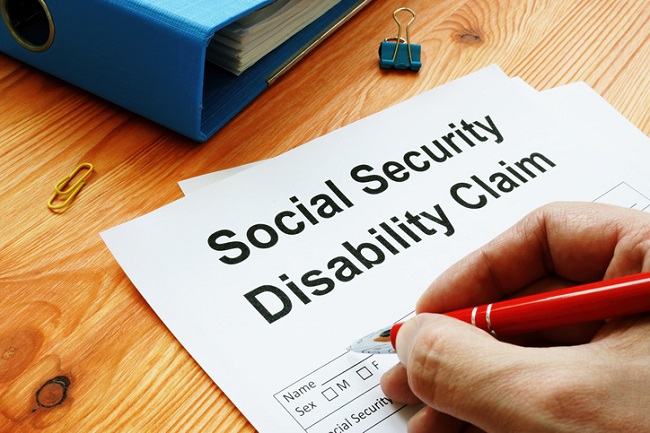PIP rates
Launched by the coalition government in April 2013, Personal Independence Payments (PIPs) are a cash benefit that help people aged 16 and over with the extra costs of a long term health condition or disability.
The amount payable through the Personal Independence Payment benefit depends on how a condition affects the individual, rather than the condition itself.
To qualify for a Personal Independence Payment, the individual needs to be assessed by a health professional to work out their ‘level’. The government says this ‘assessment will make greater use of evidence, enabling us to more accurately and consistently assess individuals to determine who will benefit most from additional support’.
To get PIP, you must:
• Need help with everyday tasks, or getting around, or both.
• Have needed this help for at least three months, and expect to need it for at least another nine months (unless someone has a terminal illness with less than six months to live).


PIP is a non-means tested benefit. So in terms of receiving it, it does not matter how much you earn, or whether you have savings or capital.
PIP consists of two components – a mobility component, based on an individual’s ability to get around; and a “daily living” component. Each are paid at two rates (“standard” or “enhanced”).
In 2023/24, the standard rate for the mobility component was £26.90 per week with an enhanced rate of £71,00. The standard weekly rate for the daily living component was £68.10, with an enhanced weekly rate of £101.75.
Assessments for Personal Independence Payment are carried out by assessment providers, normally at a PIP centre. There are four separate contracts for this work, covering different geographical areas (“Lots”): North West England/North East England/Scotland/Isle of Man (Lot 1), Central England/Wales (Lot 2), London/Southern England (Lot 3), Northern Ireland Lot 4)
Why did the government move to the PIP system?
In 2013, PIP replaced the Disability Living Allowance for people of working age (16-64). People of state pension age can continue to receive the Disability Living Allowance (DLA payments).
The Welfare Reform Act 2012 provides the framework for PIPs, with the detailed rules set out in a series of regulations.
In addition to the potential for increasing efficiencies, the coalition Government believed that PIP would have certain advantages over Disability Living Allowance:
• It would target support more closely on those most in need of support.
• It would be more responsive as claimants’ circumstances change.
• It would be based on a fairer, more transparent and consistent assessment of need.
• It would be easier for claimants, DWP staff and disability organisations to understand.
In a 2011 policy paper, the government outlined the government’s motivations:
‘We want to bring disability benefits into the 21st Century, to improve the support for disabled people, to make the benefit more responsive to their needs and enable them to lead full, active and independent lives. It is not acceptable that so many disabled people – around 130,000 people since Disability Living Allowance was introduced in 1992 – have never had their claims looked at since getting the benefit”.
Upon its introduction, it was expected that around 600,000 fewer people would receive a Personal Independence Payment than who would otherwise have received Disability Living Allowance, which had the potential to provide savings to the Exchequer of £2.5 billion per year.
Controversies with PIP payments
Delays
The timetable for introducing the Personal Independence Payment programme was delayed twice. In December 2012, the Department of Work and Pensions announced that PIP would be introduced for those with a new claim from April 2013, but that for an existing Disability Living Allowance (DLA) claimant, reassessment would not begin until October 2015.
The reassessment of DLA claimants was supposed to have started nationally in October 2013, but from that month it commenced in certain areas only.
To justify these delays, the Government said that a more “controlled approach” to the introduction of PIP would enable it to learn lessons from the “live running” of the new benefit. But a report in February 2014 from the National Audit Office said it was ‘poor early operational performance’ that had led to ‘long uncertain delays’.
In 2014, the government said that no PIP claimant would have to wait more than six months for a PIP decision, and that by the end of 2014, no one would be waiting more than 16 weeks. In July 2014, the peak wait was 41 weeks.
Statistics released by the Department for Work and Pensions in May 2015 showed that, for new PIP claims, the average time from registration of the claim to a decision being taken was down to 15 weeks. Nonetheless, on 5 June 2015, the High Court ruled that the length of time which two claimants had had to wait for a decision on their PIP claims was unacceptable and unlawful.
Mental Health
In December 2017 a High Court case ruled that changes to PIP discriminated against people with mental health problems. As a result, 1.6 million of the main disability benefit claims needed to be reviewed, with around 220,000 people expected to receive more money. The review is expected to cost £3.7bn by 2023.
According to the charity Mind, by February 2020, only 720,000 cases had been cleared and only 3,500 arrears payments had been made. Ayaz Manji, Senior Policy and Campaigns Officer at Mind responded that: ‘It’s alarming that despite it being more than two years since the landmark ruling, the number of people benefiting from an increase in PIP is still thirty times lower than the Government predicted’.
Assessment system
In 2017, an independent review of the Personal Independence Payment heavily criticised the assessment system. It revealed that 65% of those who appealed against rejected claims saw their decision overturned by judges. The review found there was an ‘inherent distrust’ of the system.
One tribunal ruling in 2016 found that those who needed help to take medication or monitor a health condition like diabetes would under the PIP system, score the same on the benefits criteria as those who needed help with therapy such as kidney dialysis
Cuts U-turn
In 2016, David Cameron’s government ‘U-turned’ on proposals to strip 370,000 disabled people of what was said to be an average of £3,500 a year after the resignation of then-Work and Pensions Secretary Iain Duncan Smith.
Cameron told the House of Commons, that, “When you are faced with having to take many difficult decisions – including many spending reductions as we were after becoming the Government in 2010 – you do not always get every decisions right”, adding, “I am the first to accept that, admit that – and on every occasion that happens we will learn the lessons”.
Reform Proposals
A review by Scope into the Personal Independence Payment benefit conducted in 2021 recommended 6 separate reforms to the system:
1. Government should consider alternative ways of offering financial support to those who cannot afford the upfront costs of adapting their Motability vehicle.
2. Government should reform the PIP assessment to accurately capture the extra cost faced by a disabled person.
3. DWP to review the length of time a claimant can receive the enhanced rate of the mobility component of PIP.
4. SSAC to review the support provided by Motability to any user who loses their enhanced mobility PIP award and becomes ineligible to lease a vehicle through Motability.
5. Government should review the eligibility criteria for the Motability scheme, so disabled people with less visible conditions can access it.
6. Government should work to ensure that all necessary information on the Motability scheme is compiled in one streamlined, readable source which is available both online and in print format. This information should also be replicated into various accessible formats such as easy-read and braille so that all disabled people may access the information they require on Motability.
- In 2023, the UK government launched a Health and Disability White Paper. The followed a Green Paper consultation, in which the Uk government heard from more than 4,500 people and organisations.
The White Paper proposes landmark reforms to the benefits system that will change the emphasis from what people can’t do, to what they can. In practice this would involve removing the Work Capability Assessment (WCA) so that in future there is only one health and disability assessment – the Personal Independent Payment (PIP) assessment.
Under these fresh proposals, it will no longer be the case that someone will need to be found to have limited capability for work or a limited capability to prepare for work in order to get additional income-related support for a disability or health condition. This is designed to reduce the worry claimants currently experience that they will lose their benefits following a reassessment.

The PIP change to the disability benefit system has proved controversial.
Statistics
Many disabled people face additional costs related to their impairment or condition across many areas of their lives. On average, these costs amount to £583 a month. – Source, Scope, Disability Price Tag Report, 2019.
Disabled people have a lower level of financial resilience than non-disabled people. Disabled people have an average of £108,000 less in savings and assets than non-disabled people – Source – McKnight, A. (2014). Disabled people’s financial histories: uncovering the disability wealth penalty, CASE paper 1
Quotes
‘I know how difficult some of our changes to the welfare system are. But they’re the right thing to do. Under Labour, people were often put on Disability Living Allowance for life without any regular assessment to see if their condition had changed’
– David Cameron, 2013
‘Surely as a society we’re good enough, big enough and open enough to say we want everybody to fulfil their dreams in their lives. That’s what this is about, independence for those with disabilities’
– Jeremy Corbyn, 2016
The tyranny of the 20 metre test: Atos presides over hated change in disability benefit
The government’s latest benefits blunder is just the tip of the iceberg


























